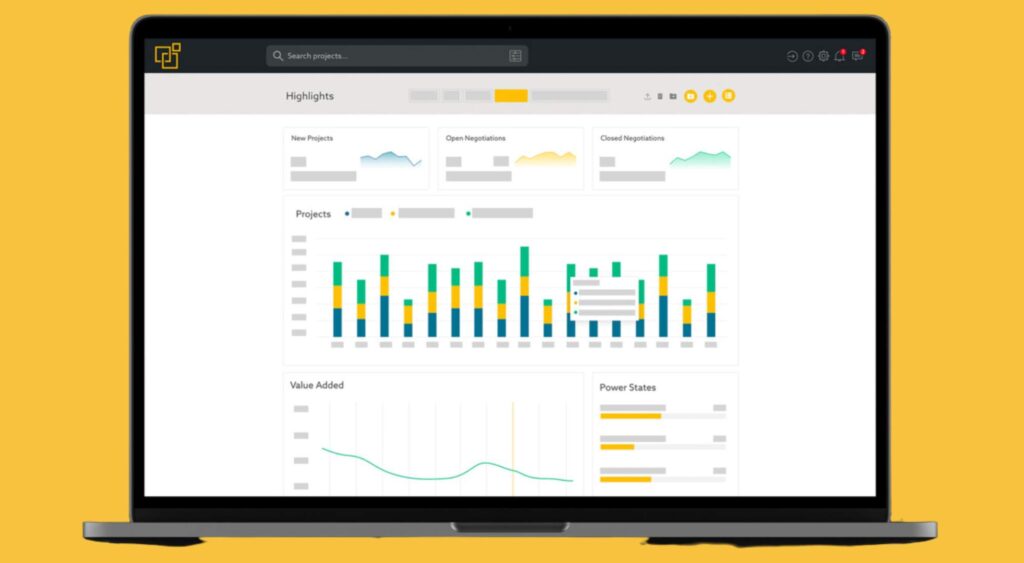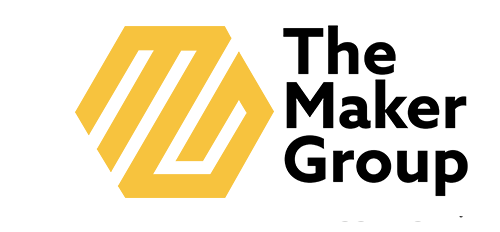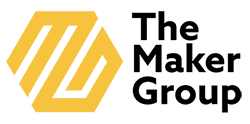Negotiation may be the most important stage in the contract lifecycle. Getting it right can help determine the success of the entire project.
Though sometimes complex and time-consuming, negotiation software can make negotiations more streamlined, efficient, and successful.
Maybe negotiation software is new to you, or you’ve shelved your company’s current negotiation software because it didn’t really deliver what it promised. We’ve created this guide to provide basic negotiation software education.
We’ll explain what negotiation software is, describe its features and benefits, and show you how to choose the right one to enhance your company’s negotiations.
Table of Contents
- What Is Negotiation Software?
- Features and Benefits of Negotiation Planning and Management Software
- How To Integrate Holistic Negotiation Software With Your Negotiation Team
- How Important Is It To Choose the Right Negotiation Software?
- Maker Connect: Effective Negotiation Preparation and Execution Software

What Is Negotiation Software?
Simply put, negotiation software is any piece of software that helps you negotiate more effectively.
To improve negotiations from beginning to end, negotiation software offers features that streamline the negotiation process by automating some of the routine aspects of negotiation management. Some of these features may include:
- Document templates
- Document generation
- Document tracking
- Electronic signatures
- Workflow automation
- Data access
Contract Management Software vs. Holistic Planning and Management Negotiation Software
Negotiation software falls into two categories:
- Contract management software
- Holistic planning and management software
They both function in similar ways, but as the name implies, holistic software aims to provide a more comprehensive and integrated platform.
Contract Management Software
Contract management software aims to capture the numbers of negotiations — figures like:
- Number of items being purchased
- Cost of each individual unit
- Total cost of the project
- Contract expiration dates
- Payment terms
- And more
Additionally, most contract management software provides a way to easily:
- Create documents
- Edit document
- Share documents for collaboration
- And more
The best contract management software allows users to do all of that in one platform.
Holistic Planning and Management Software
Holistic planning and management software goes a step beyond the numbers of negotiations and provides global negotiation tools to help companies plan, prepare, and execute a negotiation game plan from beginning to end.
Holistic negotiation software guides you through the human aspect of negotiation. This type of software gives your team actionable advice and guidance on how to navigate the psychology of negotiation each step of the way.
It’s not uncommon for uncomfortable conflict to arise during negotiations. Number-focused contract management has nothing to offer to help navigate sensitive disagreements or disputes.
Holistic negotiation software provides real-time feedback and guidance specific to your deal or need.
Getting the numbers right and documenting changes in negotiations are absolutely crucial. However, the human aspect of negotiations may be even more significant when it comes to negotiating effectively and fruitfully.
This is exactly what Maker Connect, negotiation software by The Maker Group, aims to do. Discover how this software tool can benefit your company’s negotiations by scheduling a consultation or requesting a demo.
Features and Benefits of Negotiation Planning and Management Software
Every business has different needs when it comes to negotiation tools. Below, we’ve outlined the features of The Maker Group negotiation software along with an explanation of how those features can benefit your company in practical ways.
Feature: One Central Platform
Negotiating the hard way means using multiple tools to get the work done.
Maybe you’ve experienced the difficulty of moving among different platforms like Microsoft Word to create documents and contracts and then using email to communicate and collaborate. Searching through a long stream of emails to find specific details that have been communicated is time-consuming and frustrating.
Negotiations using one central platform remove that frustration by allowing a team to communicate, negotiate, approve, sign, store, and search all negotiations in one place.
Benefit: Time and Cost Savings
Time is money, so any processes that save time also result in cost savings.
Not moving between platforms saves time by easily being able to locate documents, make edits, sign forms, and share those with other stakeholders. Simplifying and streamlining the process is a win for everyone involved.
The need to pay for various platforms and services goes away when you utilize holistic planning and management software, saving you money on multiple software purchases, training fees, and subscriptions.
Feature: Real-Time Collaboration
Negotiations often involve multiple parties, which may include:
- Corporate leaders
- Business owners
- Investors
- Vendors
- And more
Communicating thoroughly, precisely, and efficiently between numerous individuals can be overwhelming, and when not done well, it can often end in conflict.
All of that can be avoided when negotiation software is used that allows for real-time collaboration.
Rarely are negotiations cut and dry without changes or additions in contracts. When edits are made, there needs to be an efficient way to keep track of them.
This is often what is referred to as redlining, which refers to an antiquated way of editing documents by marking deletions and changes with a red pen. Imagine the time and effort it would take to pass a document back and forth numerous times for all parties to delete unfavorable parts of the contract and add their own terms.
With the advent of technological tools like word processing software and email, redlining is usually done by making changes in digital documents and sending them back and forth via email. Though more efficient than exchanging paper copies, problems still exist with this digital method:
- It takes time to search through emails to find attachments.
- It’s difficult to keep up with the most recently updated version of a document.
- Some changes may not get saved.
A better solution is negotiation management software that allows users to collaborate by providing multi-party editability from anywhere in the world in real-time.
Benefit: Simplified Version Control
Real-time collaboration keeps things simplified and saves time. Here’s how:
- It saves time by eliminating the need to send digital documents back and forth.
- There is a reduced risk of missing changes made by different parties. Real-time edits are saved in a central repository.
- There is a decreased danger of stakeholders working with different versions of a contract. Everyone has access to the same document at all times.
- Time is saved because no one will need to reproduce a working document with all the changes. Document formats are maintained throughout the entire process.
- It creates an audit/tracking trail.
Feature: Administrative Dashboards
During negotiations, it’s often helpful to get a bird’s eye view of various aspects of the project. Administrative dashboards make that possible by giving an overview of both company-wide and individual aspects of the negotiation.
Whether it’s statistics or a graph showing the progress of the negotiation, an administrative dashboard is designed to provide a platform where you can see and analyze your business’s negotiation capability and organization-wide indicators of both ongoing and completed negotiations.
Benefit: Visibility
Depending on the phase of the negotiation, a big-picture view of the negotiation can be more helpful than looking at specific details. Dashboards give everyone involved the visibility necessary at each stage of the negotiation by:
- Measuring the progress of the negotiation
- Receiving timely feedback
- Identifying obstacles
- Pinpointing factors that can help or impede progress
- Evaluating levels of negotiation confidence
- Tracking step-by-step value of effective strategies
- Determining weaknesses and areas for improvement
Dashboards help you see a variety of data at once so you have the information you need to plan and execute the next steps.
Feature: Data Retention and Knowledge Repository
The success of future negotiations may depend in some part on what can be learned from past negotiations. Holistic negotiation and management software preserves data from past negotiations and makes it accessible so you have the information you need at your fingertips to plan for future negotiations.
Having this data saved can also aid with onboarding. New hires or those who are changing roles can retrieve pertinent data to equip them for their role by getting an understanding of historical negotiation activity.
What makes this feature outstanding is this information is all in one place and is available at any time.
Benefit: Streamlined Onboarding
Onboarding new employees or those in changing roles can be efficient and productive when onboarding systems are streamlined. There’s no need to recreate the onboarding process each time when you take advantage of the knowledge repository where data is retained.
Not only does this feature streamline onboarding, but data retention and a knowledge repository also:
- Save time and money
- Put success in the reach of new employees from day one
- Provide access to critical data like:
- Offers and counteroffers
- Negotiated factors
- Sizing and timing adjustments
- Final terms
How To Integrate Holistic Negotiation Software With Your Negotiation Team
Let’s be honest. Most of us don’t enjoy change. If what we’re doing is working, why should we alter our processes and procedures?
But what if there was a way to make changes and use negotiation management software to streamline and improve negotiation processes that would save time and money and increase effectiveness? Could you get your team on board with that?
Change management may be the most difficult part of the process in a large corporate environment. Getting members of the team to change their modus operandi may seem like fighting an uphill battle.
We all tend to take the path of least resistance, so successfully integrating a new negotiation software must come from the top down. Leadership must push the change and produce convincing proof that the effort will be worthwhile.
Hands-on training is key to helping team members understand the value, while top-down leadership buy-in displays leadership’s commitment to the change. Both of these strategies ensure employees’ confidence in their leaders and set the stage for a successful adaptation of negotiation software.
To discover how holistic negotiation software can make all the difference in your company’s future negotiations, request a Maker Connect demo with The Maker Group.
How Important Is It To Choose the Right Negotiation Software?
Choosing a negotiation software comes with potential rewards and risks. Choosing the right one is an important decision to maximize the benefits and minimize the risks.
Choosing the wrong negotiation software may mean you’ll suffer from “shelf-ware” — software packages that end up sitting on the shelf instead of being utilized.
Additionally, choosing the wrong software can cost you money.
Perhaps the biggest risk of choosing subpar negotiation software is the risk of your negotiation team receiving bad guidance.
In the end, working with the wrong software can lead to damaged relationships, loss of long-term value, and unrealized partnerships.
Consider the following factors when choosing a negotiation software for your particular needs:
- The number of people who will be using the software to negotiate contracts
- The number of third-party contracts you can effectively manage
- Your budget
- Who the individuals are who will be negotiating contracts, and what they will need from the negotiating software
Choosing the Best Negotiation Software in 3 Steps
Choosing the best negotiation software for your needs is crucial to streamlining your negotiation processes and improving outcomes. Here are three steps to guide you in selecting the right negotiation software.
#1: Identify Your Specific Goals
When deciding how to choose a negotiation planning software for your company, begin by identifying your goals and objectives. What do you want to achieve?
Are you looking to improve contract management? Or maybe you want to automate workflows and enhance collaboration among your team members.
Whatever you’re goals, there are a few things to consider on the front-end and back-end as you determine your negotiation software needs, such as:
- Your company size: Consider the size and scale of your business. Smaller businesses may have different needs than larger enterprises. Ensure that the software you choose is suitable for your organization’s size and complexity.
- Defining the features you need: Create a list of essential features and functionalities you require. Common features in negotiation software include:
- Document management
- Electronic signatures
- Negotiation tracking
- Analytics and reporting
- Role-based access control; and
- Integration with other business tools
- What you want from user experience: Evaluate the user-friendliness of the software. It should be intuitive and easy for your team to adopt. User adoption is crucial for the success of any software implementation.
- How security and compliance affect your company: If your industry has specific security or compliance requirements (e.g., GDPR, HIPAA), ensure that the software meets those standards. Data security and privacy should be a top priority.
This is the first, and arguably the most important step in choosing the best negotiation software for your company. Once you know what your specific needs are, you can easily move on to the next steps.
#2: Compare the Features and Benefits of Different Tools
Once you’ve determined what you need from your negotiation planning software, it’s time to shop around. Consider this your buyer’s guide to choosing the right negotiation software:
- Research: Search for negotiation software solutions through web searches, reviews, or by asking peers or colleagues for recommendations.
- Reputation: Look for reputable vendors with a history of providing reliable negotiation and negotiation software solutions. Customer reviews and testimonials can help you gauge customer satisfaction.
- Demo or trial: Many negotiation software companies will offer a free trial or a hands-on demo to show you how their tool can address your specific needs. This experience is invaluable when assessing if the software meets your needs and aligns with your workflow.
- Scalability: Your chosen software must be able to grow with your business. It should be adaptable to meet your expanding needs.
- Cost and pricing structure: When you evaluate the pricing structure, you’ll get a better idea of whether or not it fits within your budget. Consider subscription fees, per-user costs, and any additional charges or premium features.
#3: Narrow Down Your Choices and Choose the Best Negotiation Software for Your Needs
It’s decision time. You know what you need, you’ve researched your options, and now the question of how to choose the best negotiation software is no longer on your mind. Here are your next steps:
- Collect feedback: Involve your stakeholders in your decision-making process and gather input from your team members who will be using the software. Ultimately, it needs to align with everyone’s needs and preferences.
- Prioritize features: When you compare the options on your list, identify the features and functionalities that best address your specific requirements.
- Evaluate support and training: Customer support and training are important to ensure a smooth transition. Proper support is paramount to resolving issues and getting your entire team on board.
- Look for integrations: Can the software integrate with your existing tools and systems? Integration capabilities can enhance efficiency and data consistency.
- Read the contract: Even if you feel certain about your decision, carefully reviewing the contract ensures that you understand all terms, conditions, and any service-level agreements (SLAs).
Choosing the best negotiation software can help streamline your processes and lead to more successful negotiations.
At The Maker Group, we’re committed to providing the ultimate negotiation software solution for every industry. In addition, we offer bespoke training solutions that will help get your entire team working together like a well-oiled machine.
Maker Connect: Effective Negotiation Preparation and Execution Software
If you’ve managed negotiations using contract management software and experienced average results, perhaps it’s time to see how holistic planning and management software can make a difference in your negotiation strategy for your entire team.
The experienced team of negotiators at The Maker Group understands the world of negotiations. We know the obstacles you may experience, and we are here to help.
With consulting services and training, The Maker Group offers a negotiation planning tool that is fully customizable, along with three levels of online training, in-person showcase, and other negotiation training services.
Take advantage of our customizable negotiation programs to find solutions unique to your challenges and achieve your objectives while driving profitability through negotiation.





Sorry, the comment form is closed at this time.